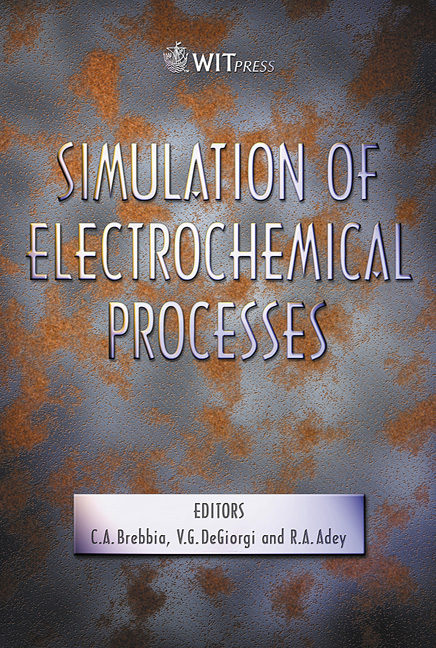Numerical Simulation Of Metal Corrosion With Cluster Formation
Price
Free (open access)
Transaction
Volume
48
Pages
9
Published
2005
Size
2958 kb
Paper DOI
10.2495/ECOR050111
Copyright
WIT Press
Author(s)
A. Taleb1, J. Stafiej & J. P. Badiali
Abstract
Using a cellular automaton model we describe the corrosion of a piece of metal in contact with an aggressive medium. The metal considered contains some defects that are distributed on some lines crossing the overall metal. Corrosion is considered in a particular environment where no oxide film is formed on the metal surface and where the diffusion is not a determining process. The main parameters of the model are the number of line-defects and the corrosion probability of the metal surface site. This probability is larger when a site is located on a line-defect than otherwise. Varying the model parameters we investigate the roughness of the metal surface and the formation of clusters that are detached from the corrosion front. We show that a complicated surface structure may appear with a high roughness if the density of defects is not too high. A relation between the cluster concentration and the surface roughness is established. Keywords: numerical simulation, cellular automaton model, metal corrosion, crystalline defects, clusters formation. 1 Introduction For many metal/ environment interfaces systems there is a clear evidence that corrosion is associated with defects, inclusions, phase boundaries, etc )Evans [1] Janik-Czachor [2,3], Richardson and Wood [4], Sedriks [5]). In some cases it was observed that the effective dissolution rate is larger than the one expected for pure electrochemical processes suggesting that another dissolution process parallel to the electrochemical ones occurs simultaneously (Marsh and Schaschal
Keywords
numerical simulation, cellular automaton model, metal corrosion,crystalline defects, clusters formation.





